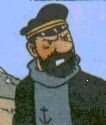Minehead is on the Bristol Channel and, as at Watchet the water is coloured by the run-off from the rivers that feed into it and is usually red brown in colour. The water is seldom clear here and as a consequence there is not much difference between daylight and night fishing. The beach which is most fished is Gasworks Beach, the gasworks, long since demolished, is marked on the map; the site is now a car park and toilet block.
The beach here is what the locals call Somerset sand, that is cobble stones big enough to break your ankles when walking over them.... be careful, the beach is not suited to small children, The ground here can be snaggy so be prepared to loose some tackle. Heavy gear is used here, currents can be fairly strong ( very strong at the end near the harbour wall on the ebb tide) and there is often weed in the water. I would normally use a strong beachcaster with 18lb mainline with a long 40lb leader.The Pier shown on the old map is long gone too, some of the base remains as snags on the seabed. The beach is steep and the pebbles give way to clean sand with the odd rock and snag at low water. If you go past the bus shelter to the west the ground gets much snaggier. This is one of the few marks locally that can be fished all through the tide.
Gasworks is a place to catch conger from the shore along with whiting and cod in season, thornback ray, pout, the always present dogfish and the occasional pollack. Baits used here are rag or lugworms, squid and fishbaits; frozen sandeel is favoured for the rays.
Bait, tackle, a decent cup of tea, and good advice can be got at the kiosk shop at the start of the harbour wall.
People fish from the harbour wall, you can see anglers starting to fish as the tide reaches the harbour steps at the end. getting a big fish up is a bit of a problem however.
The beach to the east of the harbour along Quay Street,is rough ground giving way to cleaner sand as you move east, this beach is not much fished although some good cod have been caught near the Red Lion.
If you are feeling fit, you could hike off westwards along the coastal footpath, eventually you will reach 'White Mark' which is a rock with a white patch painted on it out near Greenaleigh Farm. This originally was a lichen covered rock that sailors used as a mark showing where sandy ground for anchoring was located. The ground here is cleaner, and is a noted mark for rays and smoothound. To the east of the town there is the Butlins Holiday camp,beyond is a coast path which leads around to the 'golf course', this is a favoured mark for cod; fished a couple of hours each side of high on the bigger tides.





No comments:
Post a Comment